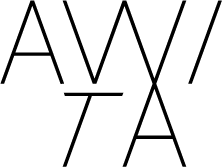“Geometry and Art: In the Modern Middle East” with Roxane Zand, Dr Sussan Babaie & Rana Begum
AWITA Online Book Club
By Anya Nikolaeva
Rana Begum
Artist Rana Begum in conversation with authors Roxane Zand and Dr Sussan Babaie regarding their new book, “Geometry and Art: In the Modern Middle East”. The book is a comprehensive survey of the legacy of geometry in art (particularly in Islamic art), and can be seen more and more in modern and contemporary Western practice.
1. Roxane Zand
Roxane started the conversation by contextualising the research in the book. She emphasised the growing mass of artworks that are coming out from the Middle East and related cultures. The noticeable shift from calligraphy to geometric abstraction within artists’ works and the general widening of the conversation about art from the Middle East fascinated Roxane. She further highlighted the importance in establishing a difference between the artworks which are inspired by the Islamic heritage canon and the ones that have a Westernised approach to them. There are some not so subtle differences in the represented geometry and representational geometry which are two entirely different sets of artistic concepts. In the Islamic culture, those artists geometries are what the end goal for an artwork, whereas in the Western approach, it is only a means to an end within an artwork.
She emphasises how her book is not a definitive work on the subject, rather a conversation opener.
2. Dr Sussan Babaie
Dr Susan Babe is a professor of Art & Architectural History of the Islamic World at the Courtauld Institute.
“Islamic - is not about religion, it is about an inspiration, a frame of mind, reference & life, that comes with the teaching of Islam and permeates incredibly diverse cultures, nearly for a century now.”
Sussan emphasised this new world view within the abstraction of geometric art. Thinking of a divine image not in terms of an anthropomorphic form, but as something beyond our imagination. She says that we cannot picture what God looks like from an Islamic point of view, therefore we are:
“Finding alternatives for the representation of this divine force, presence, power, beauty that also permeates the natural world. “
She went onto discussing how geometry fits into that, and the tendency towards abstraction and geometry of writing communicates the intellectual, spiritual and scientific exploration of the world we know. The creative response this generates is quite different from what we are used to, especially in terms of Western figurative works and narrative. The geometric abstraction go beyond these ford, they represent the structure of creation, it is underneath everything in this world, hence, making this art form entirely exploratory.
She comments on artists who work in geometric abstraction: “Contemporary artists turn back to what is the underlying understanding of nature. The nature of nature.”
3. Rana Begum
Rana is an artist whose work is included in the book.
Rana told us that she started off as a figurative artist. As her interest in art grew, she made a conscious choice of separating her Islamic culture from her art. She believes it was from the fear of being pigeonholed as a particular type of artist, and she wanted to avoid that. And even though she was drawn to geometry, rythm & symmetry, she was reluctant to go down that road with her art. She says she did not want it to come from pressure, rather to develop naturally.
During her foundation course, it started happening naturally and she started exploring the sensory effects of materials and light. At the start of her degree at Chelsea College of Art she started looking much closer at Islamic art and the spiritual aspect of it, reconnecting with her roots and culture once again. Her works became increasingly more influenced by Islamic and and architecture as well as her daily life. She emphasises her interest on the ise of infinite and perfection, however she had to let that go seeing as she realised that perfection does not exist, allowing things to just happen within her works.
The book “Geometry and Art: In the Modern Middle East” (2019) by Roxane Zand and Dr Sussan Babaie is available online.


